
Making the rice noodle rolls are a lot easier than it seems. All you need to do is make the batter and steam a thin layer of it one at a time. Of course, the cheung fun will take some time to make. However, when you take a bite into the tender rice noodle rolls, you’ll realize that it is well worth the effort.
FLOURS FOR RICE NOODLE ROLLS / CHEUNG FUN RECIPE
In this cheung fun recipe, I use 4 different types of flour for the batter: rice flour (shown above left), potato starch, tapioca starch, and cornstarch. I think the combination of these four flours/starches yield very tender and soft rice noodle rolls. Some recipes I’ve seen call for wheat starch. I made a test batch using wheat starch and found the texture of the rice noodle rolls to be more firm.
If you do not want to buy all the different flours just for this recipe, try one of the flour mixes. Many Asian supermarkets sell cheung fun flour mixes (see above right), which may be a more convenient option. All you need to do is add water and a little oil, and you’ll have a batter ready to go. If you buy a Vietnamese brand, they will be labeled “bánh cuốn.“
STEAMING EQUIPMENT

To make the rice noodle rolls, you need to steam a thin layer of the cheung fun batter on a plate or tray for several minutes. Mama Lin has a special stainless steel steaming box that she uses to make cheung fun (you can purchase it in a Chinese restaurant or kitchen store or on Amazon). However, you don’t need specialized equipment to make rice noodle rolls. Any large plate that can fit inside a wok and can withstand heat works very well. You can even use your baking pans.
I like using this Corelle oval plate (shown above) to make the rice noodle rolls. Mama Lin gave two of those plates to me, but you can find them on Amazon. I think Mama Lin bought them in San Francisco’s Chinatown for several dollars each.
Alternatively, you can use square cake pans (like the one above). The height of the pan makes it more awkward for me to begin rolling the rice noodles, which is why I don’t like using it as much. It works though!
If you happen to own 1/8-size sheet pans (like the ones that come with your toaster oven), you can also use those for steaming.
By the way, I like using this Cuisinart wok for steaming because it has a very wide lip on the top and it’s relatively inexpensive. You can also use a large, deep sauté pan with a lid.
I also place this steaming rack in the center of the wok so that I can rest a plate over it for steaming. I bought mine at an Asian supermarket for under $2. If you are using a sauté pan for steaming, you may need a shorter steaming rack.
ADDITIONAL COOKING TIPS FOR RICE NOODLE ROLLS / CHEUNG FUN RECIPE
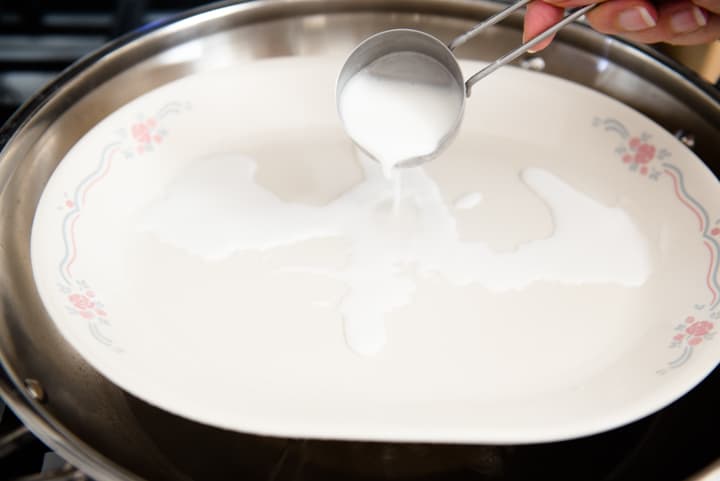
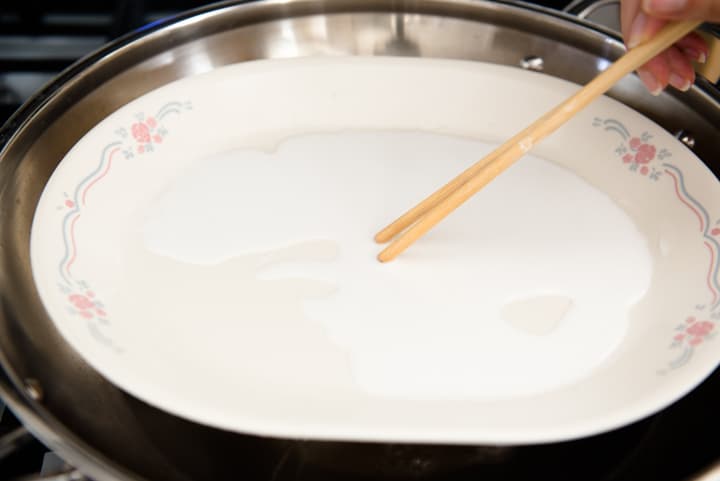
As you can see from the photo above, when I first pour the batter over the Corelle plate, it doesn’t actually cover the entire surface. I use chopsticks to help push the batter around until it covers the bottom of the plate.
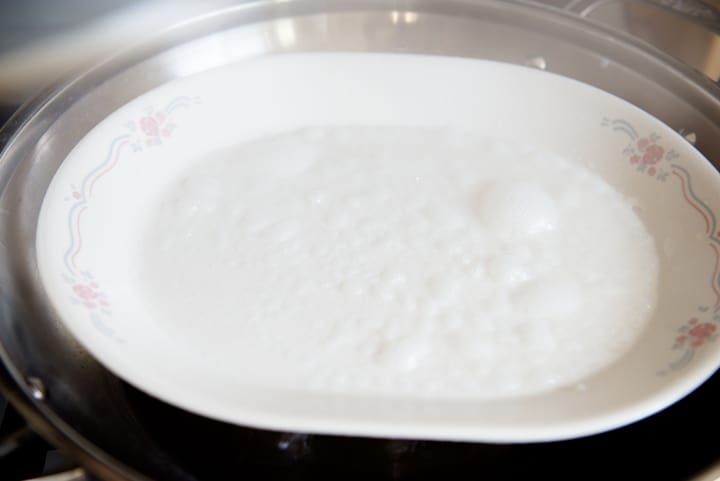
The rice noodles will take 3 to 4 minutes to cook. When you see bubbles all over the noodles (they’re basically air pockets), that is an indication that they are done cooking. The bubbles deflate immediately after you lift the lid of the wok. If you pull out the plate before the bubbles form, the rice noodles won’t be as tender.
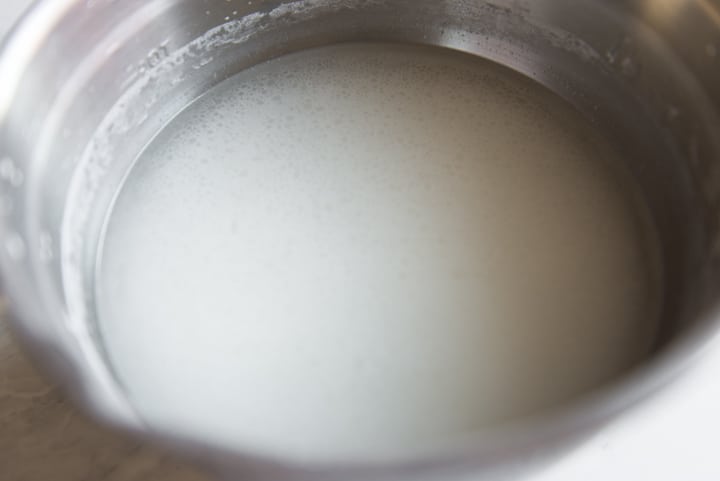 Each time you pour batter over a plate or tray for steaming, you need to stir the batter first. The rice flour and starches settle at the bottom very quickly, so you need to give everything a stir.
Each time you pour batter over a plate or tray for steaming, you need to stir the batter first. The rice flour and starches settle at the bottom very quickly, so you need to give everything a stir.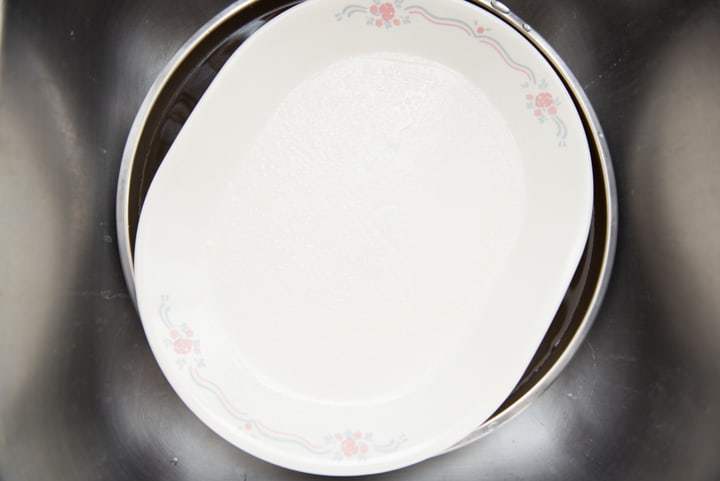 Mama Lin showed me a trick on how to cool rice noodles quickly. Carefully set the plate (or tray) over cold water. The plate or tray should be floating on top. The rice noodles will be cool enough to handle in just a minute. Sometimes, I accidentally knock some water into plate. That’s not a problem. Just tip the plate on the side and drain the water.
Mama Lin showed me a trick on how to cool rice noodles quickly. Carefully set the plate (or tray) over cold water. The plate or tray should be floating on top. The rice noodles will be cool enough to handle in just a minute. Sometimes, I accidentally knock some water into plate. That’s not a problem. Just tip the plate on the side and drain the water.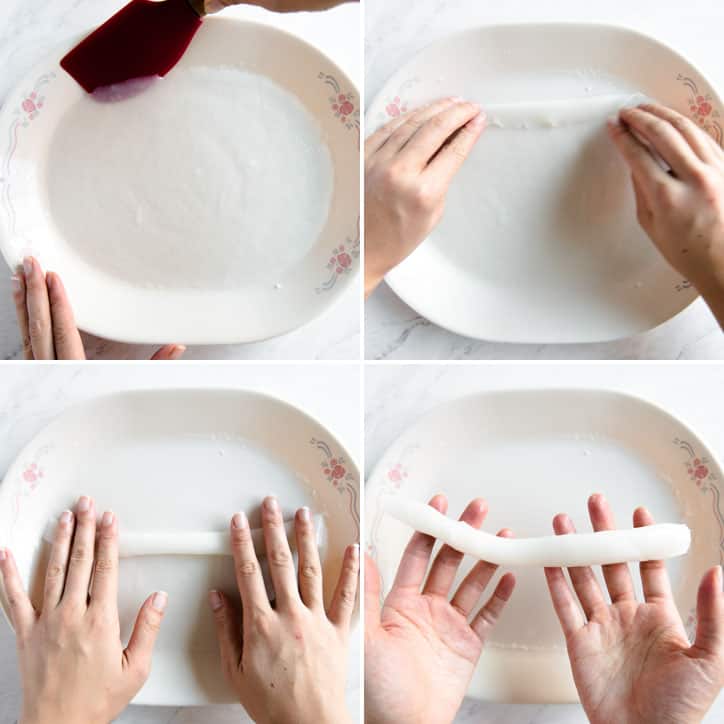 To start rolling the rice noodle, run a spatula along one edge of the noodle sheet. The rice noodle should lift off easily because of the thin layer of oil that you brush over the plate. I have seen some people line the bottom of a plate with cheesecloth to help release the rice noodles. I don’t think that is necessary. If anything, it makes the cooking more messy.
To start rolling the rice noodle, run a spatula along one edge of the noodle sheet. The rice noodle should lift off easily because of the thin layer of oil that you brush over the plate. I have seen some people line the bottom of a plate with cheesecloth to help release the rice noodles. I don’t think that is necessary. If anything, it makes the cooking more messy.
Basic Rice Noodle Rolls (Cheung Fun, 腸粉)
This recipe yields about 15 to 20 rice noodle rolls, depending on how much batter you use for each layer. You can halve the recipe if you want to make fewer rolls. I often have two woks going to shorten the total cooking time.
Ingredients
▢1 cup (140g) rice flour (see note 1)
▢1/2 cup (90g) potato starch
▢1/4 cup (35g) tapioca flour or starch (see note 2)
▢1/4 cup (35g) cornstarch
▢1 tablespoon sugar
▢1/2 teaspoon salt
▢2 cups (470ml) room temperature water
▢2 cups (470ml) just boiled water
▢1 tablespoon canola or vegetable oil, plus more for brushing
Optional Toppings
▢teriyaki sauce
▢chili oil
▢chopped toasted peanuts
▢toasted sesame seeds
▢sliced scallions
Instructions
- In a large bowl, whisk together the rice flour, potato starch, tapioca starch, cornstarch, sugar, and salt.
- Create a well in the center of the flour. Gradually drizzle the 2 cups of room temperature water, stirring everything together with your whisk.
- Once the flour and water is well mixed, gradually drizzle the 2 cups of hot water into the batter and whisk. You do not want to pour all the hot water in at once because it will cook your flour and starches, causing everything to clump up. I usually pour a small stream of hot water and whisk at the same time.
- Add the canola oil and whisk to incorporate the oil to the batter.
- Add water to your wok (or sauté pan), cover the wok, and bring the water to boil. (See note 3) I usually add enough water to cover the bottom 2 inches of my wok.
- Fill a large pan or bowl with cold water and leave it in the sink.
- Once the water boils, place a steaming rack in the center of the wok. Brush a thin layer of oil over a large plate (or cake pan) and place it over the steaming rack. Give the batter a stir to loosen the flour that has settled to the bottom of the bowl. Pour 1/4 to 1/3 cup of batter over the plate. Use a spoon or chopsticks to spread the batter so that it covers the entire surface of the plate. Cover the wok and let the rice noodle cook for 3 to 4 minutes, until bubbles start to form on the noodles.
- Uncover the lid and use oven mitts or a towel to help you remove the hot plate from the wok. Carefully place the plate over the cold water and let the rice noodle sheet cool for a minute. Get another layer of rice noodles cooking while you wait for the first one to cool.
- To roll the rice noodles, run a spatula along one edge to release the sheet of rice noodles. Start lifting the sheet and roll it up into a long log. See photos above for reference. Set the rolled up rice noodle aside. Continue cooking the rest of the batter.
- Cut all the rolled up rice noodles into 2-inch sections. Serve the cheung fun with my teriyaki sauce, chili oil, chopped peanuts, sesame seeds, and scallions. You can also eat the cheung fun with soy sauce and sesame oil.
- Refrigerate leftover rice noodle rolls for up to 3 to 4 days. They are great for stir frying.
This recipe and image sources are referred in website: Healthynibblesandbits.com. Thanks so much!
 Asian Recipes
Asian Recipes
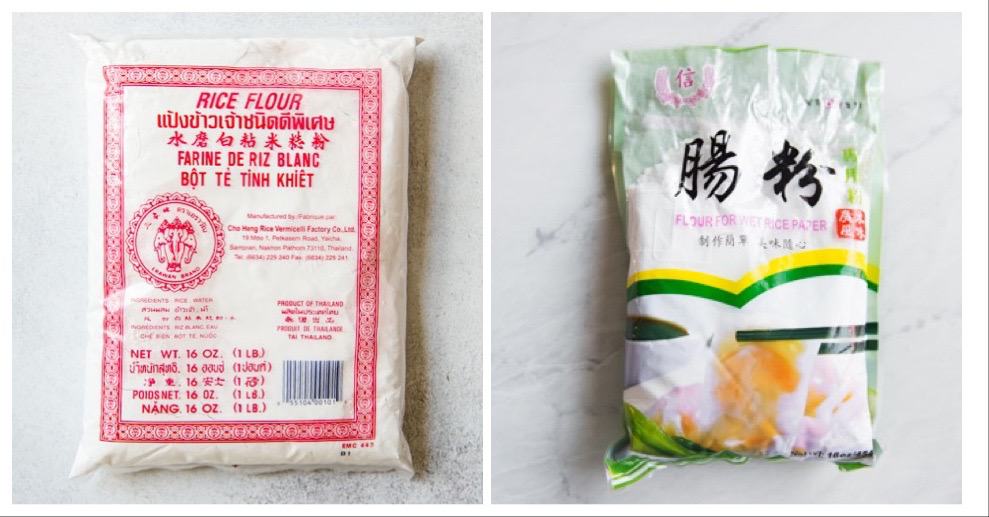




















No comments :
Speak Your Mind: